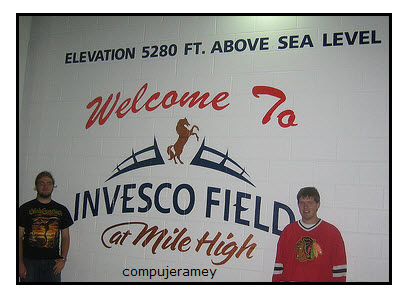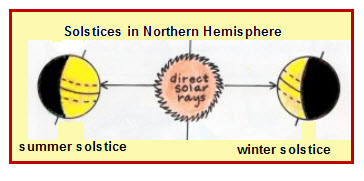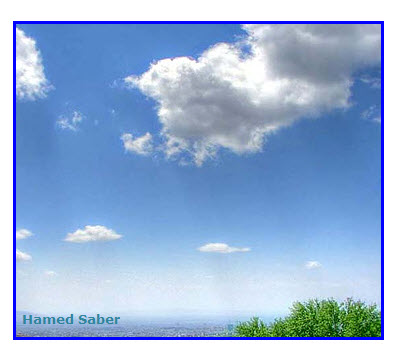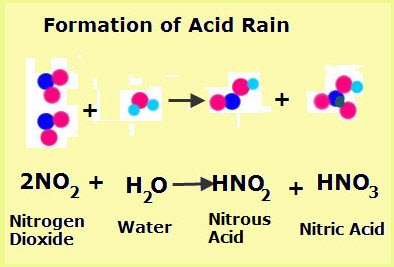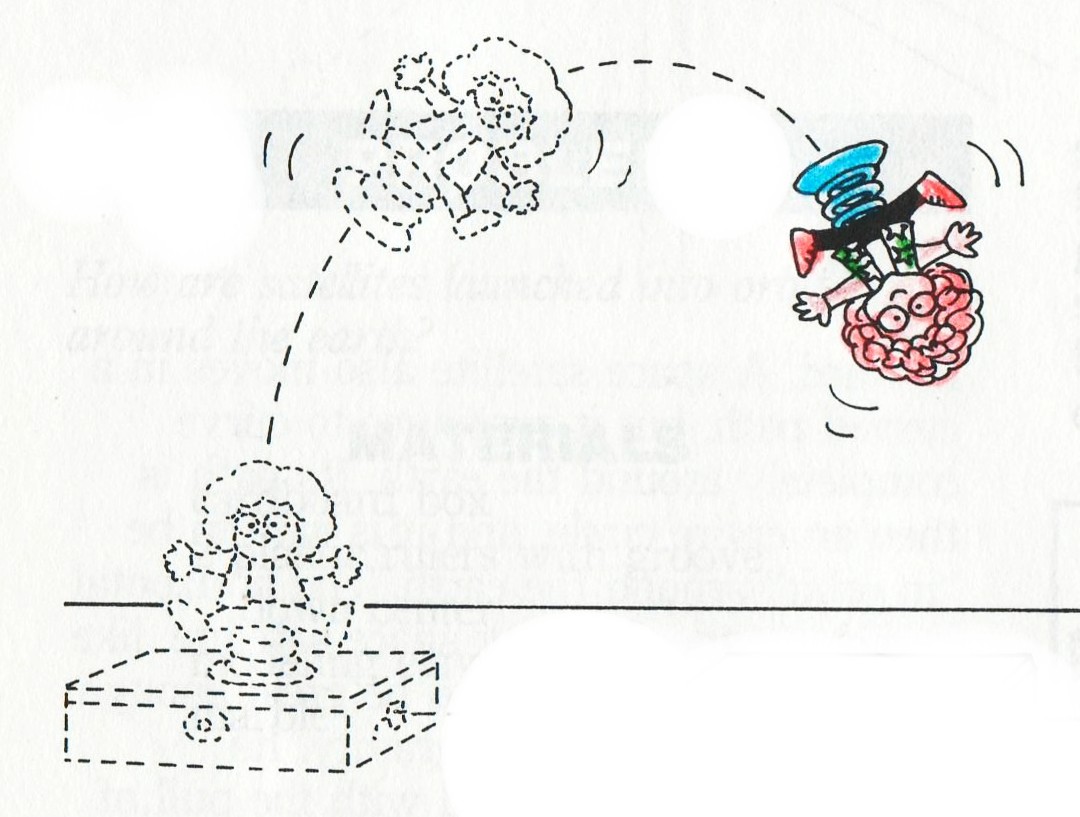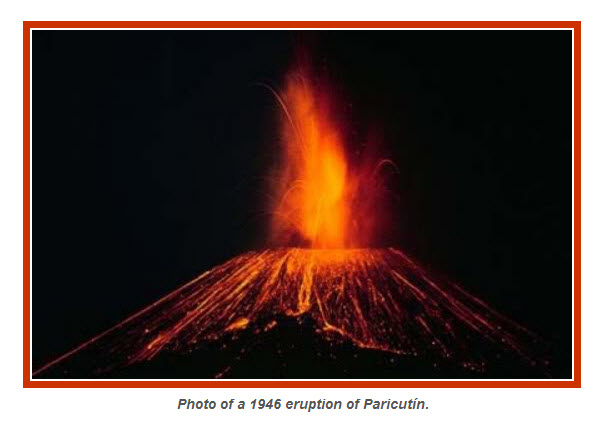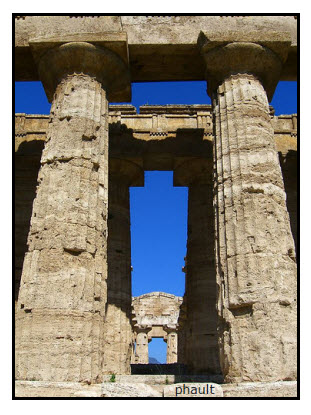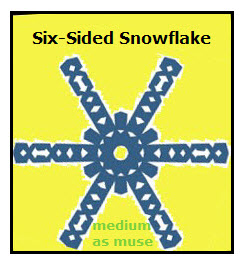The gravitational attraction between the Earth and its atmosphere is greatest near the Earth’s surface. As a result, the density of air molecules is greatest near the Earth’s surface and decreases as the distance from Earth’s surface increases. The greater the density of air molecules the greater is their pressure. Air pressure is greatest at […]
Equinox vs. Solstice
Times of sunrise and sunset change daily throughout the year as Earth revolves around the Sun. Changes in seasons are linked to the regular changes in the hours of daylight and darkness throughout the ear. The equatorial region (tropics) between the Tropic of Cancer and the Tropic of Capricorn has about an equal amount of […]
Atmosphere
Question: What is the atmosphere? Answer: Some planets, such as Earth and Venus have a layer of gas surrounding the planet, which is called the atmosphere. Earth’s atmosphere reaches out from Earth’s surface for over 350 miles (560 kilometers). The atmosphere diagram (left) represents the density of air in Earth’s atmosphere. The blue dots represent […]
The Formation of Acid Rain
Sulfur oxides are gases released during the eruption of volcanoes as well as when fossil fuels (coal and oil) are burned. Large amounts are released when industries and power plants burn fossil fuels.The diagram shows two sulfur oxides: sulfur dioxide sulfur trioxide Lightning causes nitrogen and oxygen in the air to combine forming nitrogen oxides. […]
Daylight Saving Time
Daylight Saving Time (DST) starting and ending dates. How DST saves energy.
Types of Volcanoes
A volcano is the mountain or hill formed by the accumulation of materials erupted through one or more openings in the Earth’s surface. The pipe-like openings that connect the volcano’s crater (depression at the top) to the magma chamber (pool of molten rock deep within the Earth) are called volcanic vents. Volcanoes form because heat […]
Carbon-14 Dating
Question: What happens to the Carbon-14 when plants and animals die? Answer: When organisms containing C-14 die, there is no further intake of Carbon 14, so the Carbon- 14 concentration slowly decreases as individual unstable Carbon- 14 decay back into stable Nitrogen -14 atoms. Question: What does radioactive half-life mean? Answer: Carbon -14 has a […]
Damages of Acid Rain
Acid Rain Damages Vegetation While acid rain affects all plants, trees often show the first signs of damage. Acid rain affects trees directly when it comes in contact with their leaves and bark (this makes tress vulnerable to disease and insects). Indirectly, acid rain affects trees by dissolving nutrients in soil that trees need. The […]
Snowflakes
Six-Sided Snowflake Models The snow flake to the right gives the basic design of a six-sided snowflake. You can be as creative as you dare in making snowflake models. Just be sure they have six major sides. A paper snowflake can be cut from a round paper coffee filter. The procedure for folding and cutting […]
Earth Science Books
Earth Science Earth is term for any and all sciences related to the planet Earth. Earth Science is also known as geoscience. >
